Press room

Media Enquiries
David Riendeau
Tél. : 4506790540 poste 8355
Press Releases
Media resources
Click on the photos from to enlarge them.
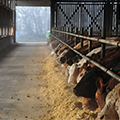 |
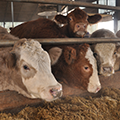 |
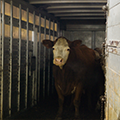 |
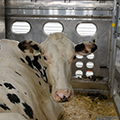 |
 |
| Fed cattle | Fed cattle | Cull Cattle | Cull Cattle | Grain-Fed veal |
 |
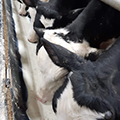 |
 |
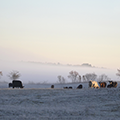 |
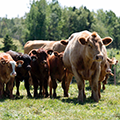 |
| Grain-Fed veal | Milk-Fed veal | Milk-Fed veal | Feeder calf | Feeder calf |
 |
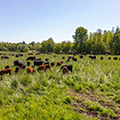 |
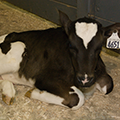 |
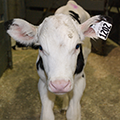 |
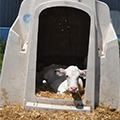 |
| Feeder calf | Feeder calf | Dairy Calf | Dairy Calf | Dairy Calf |
FAQ (Frequently Asked Questions)
The six categories of cattle production in Quebec
All cattle production in Quebec falls into two main sectors: beef and veal. Beef includes feeder calves (beef calves), fed cattle, and cull cattle. The veal sector includes bob calves, grain-fed veal calves, and milk-fed veal calves.
Cull cattle (16% of cattle sold)
Cattle are usually culled when they have reached the end of their active life as a dairy or beef cow. The meat from these animals is made into ground beef for fast-food restaurants, among other things. In Quebec, nearly 92,000 cull cattle (2021 figures) produce over 20.1 million kilograms of beef (retail weight). Annual livestock sales are approximately $84 million.
Bob calves (28% of cattle sold)
Bob calves sold in Quebec are mostly purchased and finished by milk-fed and grain-fed veal calf producers.
Grain-fed veal calves (13% of cattle sold)
Nearly 75,000 grain-fed veal calves (2021 figures) are produced each year in Quebec, with annual sales of around $71 million (farm gate value). Grain-fed veal accounts for about 13% of Quebec production by volume and 12% by value.
Milk-fed veal calves (12% of cattle sold)
Nearly 70,000 milk-fed veal calves (2021 figures) are produced each year in Quebec, with annual sales of around $87 million (farm gate value). Milk-fed veal accounts for about 12% of Quebec production by volume and 15% by value.
Feeder calves (18% of cattle sold)
Feeder calves are raised on pasture and subsequently sold primarily for their meat-producing potential. Over 109,000 feeder calves are produced each year in Quebec, with a total farm gate value of about $134 million. In addition, Quebec’s feeder calf producers (also known as cow-calf producers) raise 139,400 beef cows (breeding animals) annually.
Fed cattle (13% of cattle sold)
These are feeder calves that are fed balanced, high-quality, and energy-dense rations. This diet allows the animals to gain over 3 lb (1.3 kg) per day. Upon reaching maturity, the animals are sold to the abattoir, where they are processed into various cuts of beef. In Quebec, 77,500 fed cattle (2021 figures) are produced each year, for a total farm gate value of about $177 million.
For further details on these categories of cattle, see the At a glance section of our website.
Quebec cattle production and the environment
There is no such thing as agricultural activity that has zero impact on the environment. And since cattle production involves ruminants, cattle will generally have a higher carbon footprint than other animals raised for human consumption.
A few figures on agriculture and environment
- In Quebec, agriculture is responsible for 9.2% of GHG emissions, which is less than transportation (43.3%), industry (29.4%), and the residential, commercial, and institutional sectors (10%). (Source: Quebec government)
- When it comes to GHG emissions within Quebec’s agriculture sector, 37% comes from enteric fermentation (the digestive process that takes place in ruminants), 31.5% is from soil management, and 26.9% comes from manure management. (Source: Quebec government)
- Canadian beef production (Quebec included) has one of the lowest levels of GHG emissions in the world, at 50% below the global average. This is because of the work on animal genetics that has taken place over the years, which makes it possible to optimize the use of resources. In other words, our farmers are more productive! (Source: Canadian Roundtable for Sustainable Beef)
- Canada-wide, when it comes to cattle production specifically, 73% of total GHG emissions are from enteric fermentation. (Source: https://doi.org/10.1016/j.anifeedsci.2011.04.047, https://doi.org/10.1071/AN15386)
- From 1981 to 2011, Canadian cattle production trimmed its GHG emissions by 14%. (Source: https://doi.org/10.1071/AN15386)
- The Canadian beef industry has set the goal of reducing GHG emissions by 33% by 2030. (Source: Canadian Roundtable for Sustainable Beef objective)
Certified sustainable beef producers
The Verified Beef Production Plus (VBP+) program certifies that beef producers use beneficial practices in their operations. Since 2018, the program has included a sustainable development component. In Quebec, 54% of fed cattle production volume is certified VBP+. There is still work to do when it comes to cow-calf production, but there seems to be a real interest on the part of producers to get more businesses certified.
Reducing GHGs through cattle feed
Many strategies are currently being tried in Canada to reduce enteric methane levels, including increasing animal productivity, selecting animals that produce less methane, increasing forage digestibility, adding certain fats to feed, and using high-starch forage.
Synergraze, a Calgary-based company, is currently developing a seaweed-based feed additive that could reduce up to 90% of enteric methane emissions from cattle. In the same vein, a product called Bovaer can be added to cattle feed to reduce methane emissions. These products are in the process of being approved for use in Canada.
Water in beef production: using a limited resource
It takes between 460 and 630 litres of blue water to produce a kilogram of deboned beef. However, only 3% of the water needed to raise beef comes is drawn from drinking water sources. (Source: https://doi.org/10.1016/j.scitotenv.2017.11.194)
Soil in beef production: managing it responsibly
In Quebec, the land on which cattle are raised is mostly unusable for other crops intended for human consumption.
The average amount of land needed to raise a beef cow shrunk by 25% between 1981 and 2011 thanks to increased productivity. (Source: http://dx.doi.org/10.1071/AN15386)
Various pasture and forage management practices are used to foster better forage production, thus contributing to carbon sequestration. Cattle producers are also implementing better manure and litter management measures, which reduce carbon emissions.
For further information on environmental considerations in cattle production, as well as current animal health practices, see the Our Concerns section of our website.
 Youtube
Youtube Facebook
Facebook